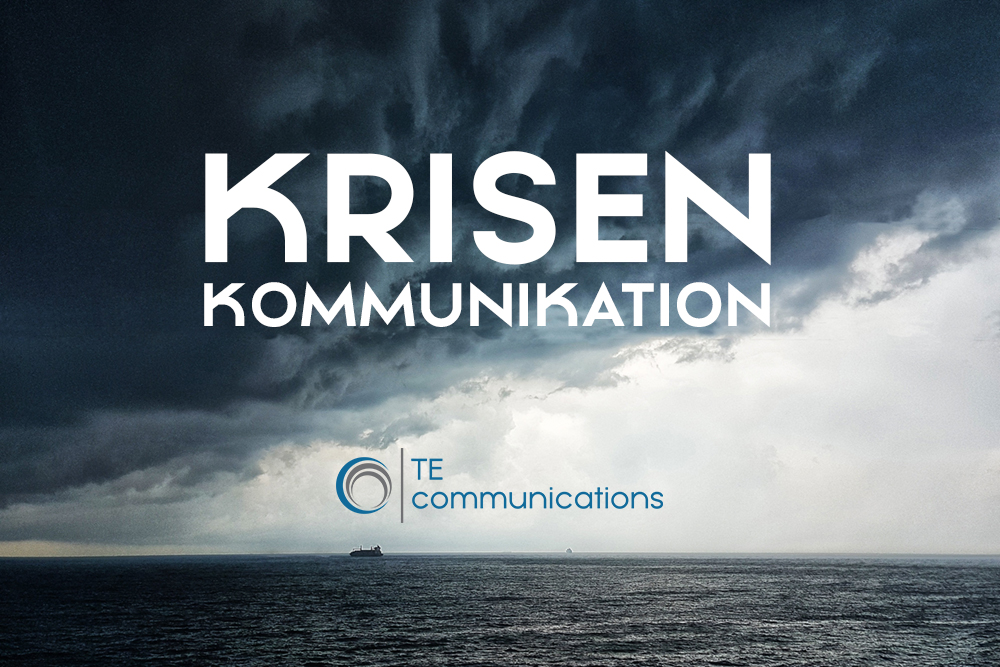Blog post by Birte Orth-Freese, CEO at TE Communications
A crisis often hits companies unexpectedly, leaving little time to develop a strategy. Those who are unprepared lose control, credibility and possibly even the trust of their clients and partners. But what is the difference between excellent crisis communications and disaster?
- Crisis communication is no coincidence – it starts long before the crisis
Many companies neglect the fundamentals of good communications. Crisis communication is not an off-the-cuff discipline, but is built on long-term relationships with the media and stakeholders. The better the foundation and the more trusted the network with journalists, the more successful crisis communication will be.
Companies should proactively engage with journalists – at least once a year through background discussions. Those who only approach editors during a crisis have already lost.
- If you are not prepared, you lose valuable time
In a crisis, every second counts. Time is the most important asset and one that is in short supply. But how do you prepare?
- A clear crisis plan: Who is on the internal crisis team? What processes kick in when? Who communicates with whom?
- Stakeholder management: Employees, customers and partners need to be informed – quickly, clearly and in a coordinated way.
- Define communication channels: Which platforms matter for which audiences?
- Good vs. bad crisis communication: Who led the way?
The ‚Dieselgate‘ drama shows how not to do it: Volkswagen initially denied it, then delayed communication and only accepted responsibility at a late stage. The result? A massive loss of trust and immense financial damage.
Samsung, on the other hand, reacted with lightning speed to the Galaxy Note 7 battery disaster in 2016, taking responsibility, communicating transparently and opening up the fault analysis to independent experts. The result? Restored trust and a successful brand for the long term.
- Which channels work best during the crisis?
There is no one right communication channel – but there is a clear sequence:
✅ Employees first: internal channels such as meetings, memos or digital tools should be used before informing the public.
✅ Direct partners: Clear communication via email or direct contact.
✅ Press & Website: A brief initial statement so as not to leave the media in the dark.
✅ Social media: Fast, transparent social media updates are essential, especially during a product-related crisis.
- The biggest mistakes in crisis communication
1️. React too late: Time is of the essence. Any delay is seen as a cover-up.
2. Underestimate the crisis: If you don’t recognise the impact, you risk shitstorms or boycotts.
3. The wrong tone: A lack of empathy can make the situation worse. An example? United Airlines: after a violent incident on board in 2017, its CEO initially didn’t apologise – he only responded credibly after massive pressure.
- External consultants: a curse or a blessing?
External crisis consultants provide the critical outside view. They help to maintain a neutral perspective, provide moderation and avoid potential pitfalls. Ultimately, however, the decision always rests with the company itself.
If the management itself is affected, it cannot be the sole spokesperson for the crisis. A neutral face – such as another manager – must communicate to the outside world to maintain credibility.
- The golden rule of crisis communication
Three principles for successful crisis communication should always be considered:
✅ Preparation: No control without a plan.
✅ Transparency: Honest and fast communication creates trust.
✅ Take responsibility: Don’t cover up – show solutions.
Conclusion: Crisis communication is the ultimate challenge for companies. Those who are prepared, act quickly and take responsibility can even emerge stronger from the crisis. Companies that ignore these lessons risk irreparable damage.




